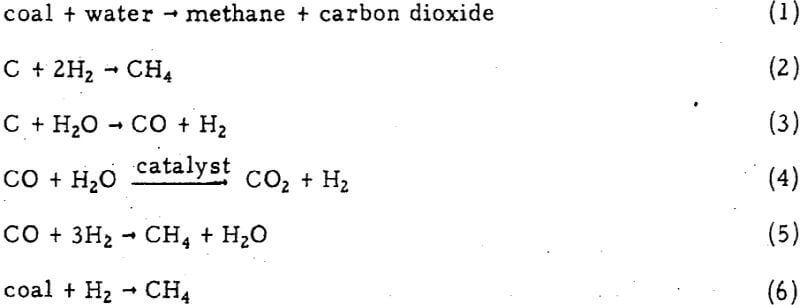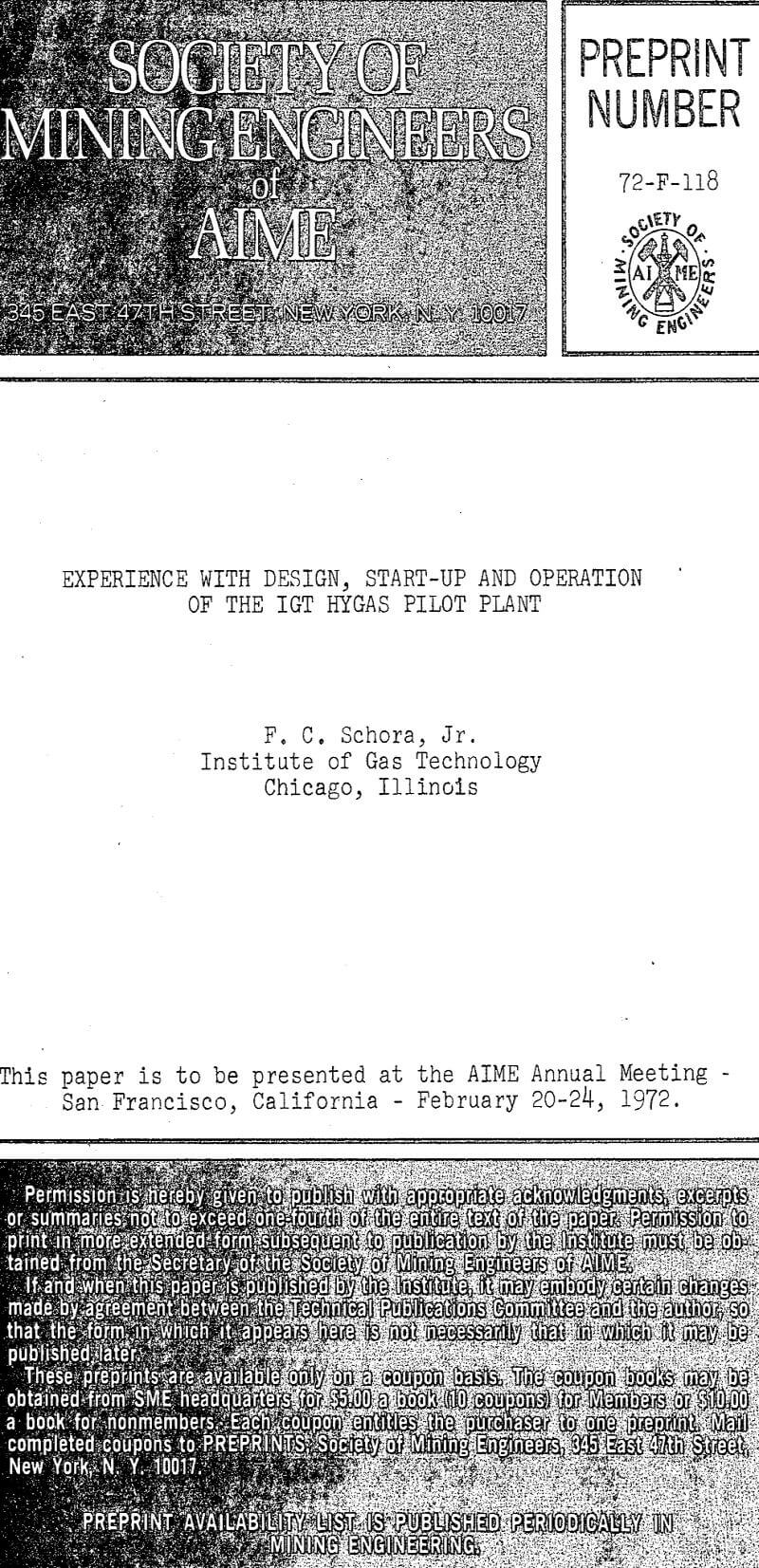The HYGAS Process is one of several coal conversion processes now under development within the United States and is the most advanced in development. It is based on the overall reaction of coal and water to produce methane, which is the major constituent of natural gas,and a by-product, carbon dioxide, which is exhausted to the atmosphere.

This overall reaction (Reaction 1) cannot, however, be directly achieved because of thermodynamic limitations, and various routes are necessary in order to obtain the overall result. There are basically two methods by which coal can be converted to methane, the preferred of which is the direct attack of coal by hydrogen (Reaction 2) under the proper conditions to produce methane. Interestingly enough, this reaction produces a considerable amount of heat, equivalent to about 20 % of that which would be produced by the combustion of the carbon. The other approach, which is an indirect approach, is to first convert the coal to a synthesis gas consisting of carbon monoxide and hydrogen. This reaction (Reaction 3) is quite endothermic requiring a heat input at temperatures above 1700 °F. After adjustment of the hydrogen and carbon monoxide to a ratio slightly greater than 3 by Reaction (4), a second reaction (Reaction 5), the combination of the carbon monoxide and hydrogen to produce methane over a catalyst, is carried out.
Another approach which is under consideration is the use of a steam-iron system which has also been under development at IGT for a number of years for a private group known as Fuel Gas Associates. Using this method, char is partially oxidized under controlled conditions with air to produce a reducing gas which is used to reduce an iron material circulating in the system.
The HYGAS pilot plant, located in Chicago, Illinois, is designed to convert about 82 tons of coal/day to 1-½ million cubic feet of pipeline-quality gas and has been designed to handle coals ranging from bituminous to lignite. Maximum operating pressure is 1500 psi. The plant consists of the following major systems:
- Coal crushing and drying
- Coal pretreatment
- Coal feeding involving an oil slurrying and a high-pressure pumping system
- Coal slurry drying
- Two stages of hydrogasification
- Reacted solids slurrying and discharge system
- Gas cleanup
- Catalytic methanation
- Sulfur recovery in the form of a Claus plant
- The associated utilities required in support of the operation
As previously mentioned, the pilot plant has been undergoing shakedown and start-up operations since May 1971 at which time construction was essentially complete. Several significant achievements, we feel, have been accomplished at this point in time which are —
- Demonstrated at large scale, 2 tons/hour in a 6-ft-diameter reactor, operability of self-sustaining and controllable pretreatment of coal with air using steam-generating coils within the fluidized bed of coal to recover heat generated.
- Successfully operated the unique HYGAS reactor water jacket design at pressures up to 700 psia with temperatures in the reactor up to 1700 °F. In the design, the water jacket has its pressure equalized with the internal reactor pressure.

